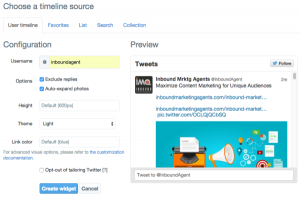— September 10, 2018

12019 / Pixabay
One of the easiest ways to improve your company’s performance is to increase the number of people that are engaged with the organization and are emotional and rationally committed to the vision, strategy and the delivery of the results of that same organization. For this to happen employees, line managers and the HR department all have steps they have to take and of course, the leaders have to do their part as well. But, why improve employee engagement?
According to the AONHewitt definition, engaged employees want to:
- Stay (intent to stay with the organization)
- Say (speak highly of the organization to others) and
- Strive (make an discretionary effort to deliver results)
Why invest time and funds to improve employee engagement? Well there are several evidence suggesting that a company of engaged employees can outperform their competitors in areas of:
- Financial results
- Customer satisfaction
- Delivering better quality
- Improved productivity
- Lesser accidents
- Innovation
If despite the overwhelming evidence you still don’t believe in the relation between the engagement level of your employees and your company performance than I suggest you implement the following 6 steps and try it yourself. Maybe you’ll then realize the impact of highly engaged employees when you ‘experience’ its impact.
1. Inspire Employees Through Purpose
If your primary means of motivating your talent is through monetary gains, then let me be the first to tell you, you’re going to fail. They won’t push their performance boundaries and will soon leave you. Instead, what really motivates and inspires people is a perceived quality of life that they enjoy and that provides them meaning. Earning money along the way is just part of the deal, not the main drive. As their leader you have to co-create and communicate a purpose that excites people and gives them a sense of belonging and meaning.
2. Align Employees Behind Your Purpose
Having meaning and feeling good about being part of an organization that has a purpose doesn’t translate words into action. To deliver results you have to work together with your team on how you will achieve this vision and cascade your strategy to the lowest level of the organization. Include your teams in that purpose. Make them believe it and be a part of it. It must be done in a way where even the receptionist and the customer service representative understand. Moreover, they should also be able to explain how their role contributes to the company’s strategy, vision and purpose.
3. Develop Future Leaders
To really have a highly engaged workforce you’ll need to solicit the help and support of your line managers and leadership team. Also, you’ll need to keep your eyes open for future leaders. Take them under your wing and develop them as future stars and exponential leaders. As such your selection and appointment of the right future leader is crucial in your ability to engage your workforce. Hence, be selective when hiring and measure talent to truly only bring in future leaders.
4. Be Fair
Being fair is not as easy as it sounds. Fairness means different things for different people. However fairness can be divided into:
- fairness on procedures,
- fairness in how you distribute resources, and
- fairness in relations.
As a leader it’s important to create an organization that is perceived as ‘fair’ since perceived unfairness is probably the fastest ‘engagement deflator’.
5. Be a Role Model
One of my favorite quotes is
“We preach the gospel and if necessary use words” – Francis of Assisi
It brings out the essence of leadership. People won’t follow you for what you say but for what you do. If you can’t role model the values of the company, can’t act to engage employees then my advice is don’t even bother to start the journey. Either you’re really walking the walk, or you’re just faking it. And believe me, your people know the difference.
6. Measure and Set Engagement Goals
If you don’t set a goal and measure it you won’t make progress. So if you’re convinced and have taken some of the above steps, start measuring what impact it’s having on your teams. Use the right survey to measure your current engagement level and know where your most engaged employees are and in which department, age bracket, level, function you have to focus on and where you need to groom and develop.
Bring engagement to life in your company. Set targets and make line managers and your leadership teams responsible. Hold them accountable to improve employee engagement scores. Make sure that they discuss employee engagement at weekly meetings and in one-on-one meetings with employees to weave engagement into daily fabric of the organization.
Business & Finance Articles on Business 2 Community
(21)









